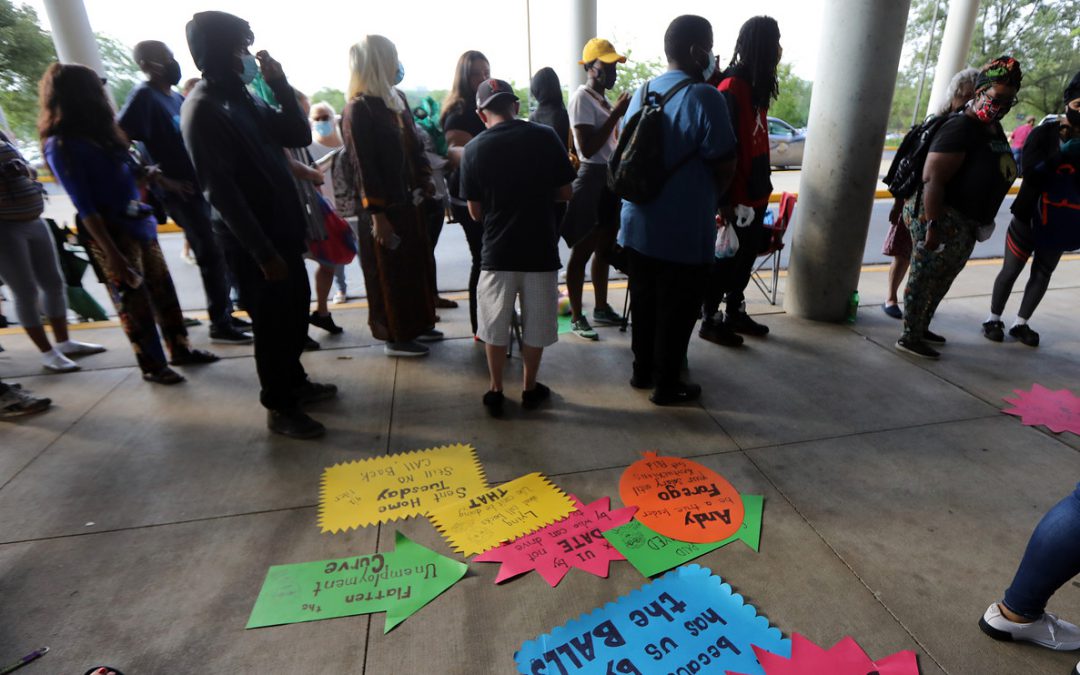The states and federal government have fallen behind in updating decades-old technology and need to upgrade quickly to better serve the public, experts say, a point underscored by reports that millions of jobless Americans still haven’t received unemployment checks.
The situation has become especially acute as old government computer systems buckle under the weight of record unemployment claims and a massive shift in state and federal employees working from home during the coronavirus crisis, technology leaders told a congressional panel on Wednesday.
Just last week, 2.4 million Americans filed for unemployment benefits to push the total during the fourth-month pandemic to a whopping 58 million. Before the disease struck, the 50 states were handling fewer than 250,000 new jobless claims a week.
Altogether, some 30 million people are collecting benefits and millions more reportedly still have not received their first checks. Residents in states such as Oregon, Arizona, Kentucky and California have reported delays in receiving unemployment benefits or even getting in touch with a person on the phone to assist them.
Only 16 states have fully modernized their systems, according to a private agency that partners with the U.S. Labor Department to help unemployment offices upgrade their systems.
To speed up the distribution of benefits, Congress in March included a $1 billion grant for state unemployment offices to invest in new technology as part of a broader pandemic relief bill.
The Democratic-controlled House has also added an extra $1 billion in a new relief package to shore up a federal fund created in 2017 to help the government modernize its technology.
Rep. John Yarmuth of Kentucky, the Democratic chairman of the House Budget Committee, urged the Senate to pass the measure, but the Republican-led chamber is preparing a relief package of its own. It’s unclear whether the Senate will go along.
Even if the Senate assents, the modernization fund is not collecting enough administration fees to be self-sustaining in the future, said Teresa Gerten, president of the National Academy of Public Administration. She and other experts urged Congress to invest more now or the problems will get worse.
Jennifer Pahlka, founder of the nonprofit help group Code for America, said one of the government’s chief goals should be to make its technology more user friendly. The current method of applying for unemployment compensation, for example, is too confusing and slow to distribute money to people who badly need it.
“Neither the technology nor the policies were designed to be agile [or] scalable,” Pahlka said. “We have known this for decades.”
Rep. Seth Moulton, a Massachusetts Democrat, said the government needs to invest more in cutting-edge technology and stop spending so much to maintains systems that in some cases date to the 1950s.
He pointed to a recent federal study that found 80% of the $90 billion the government invested in technology in 2019 went to maintaining outdated computer systems and the like.
“Think about investing almost the entirety of your family IT budget in repairing your 1950s TV set to keep it working every year, which only becomes more expensive over time as the technology becomes more obsolete, rather than ever buying a flat screen,” he said.
Some lawmakers expressed worries about the threat of security breaches with so many government employees working from home.
In a veiled shot at China, Rep. Bill Johnson said the government needs to choose U.S. or other vendors that can be trusted to protect sensitive data.
“The coronavirus has heightened our awareness of just how fragile our supply chains are, including our reliance on other countries for critical items, including the dangers of companies controlled by our adversaries that are equipping our networks,” the Ohio Republican said. “We must ensure that companies like Huawei, and ZTE no longer have access to our networks.”
The Trump administration has temporarily banned the two Chinese companies from selling networking gear in the United States under a little-used national security law.

